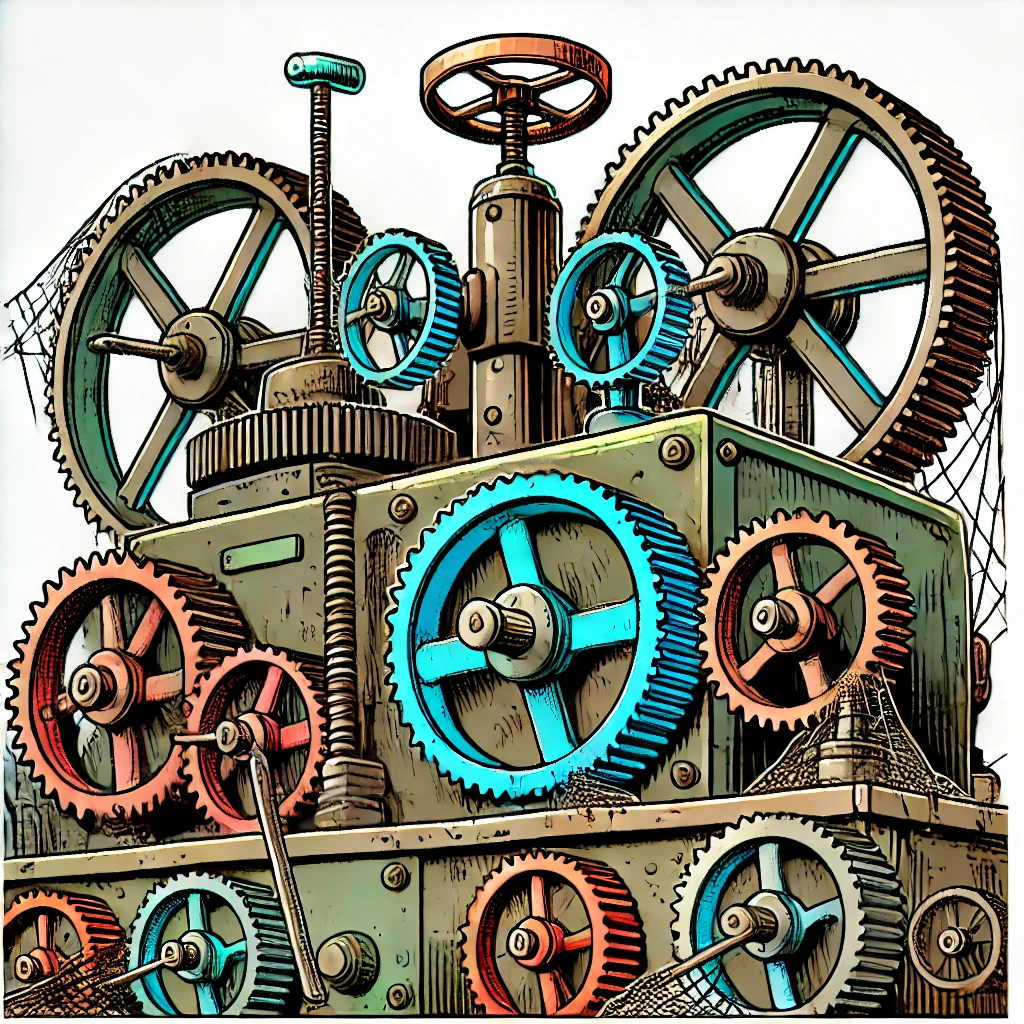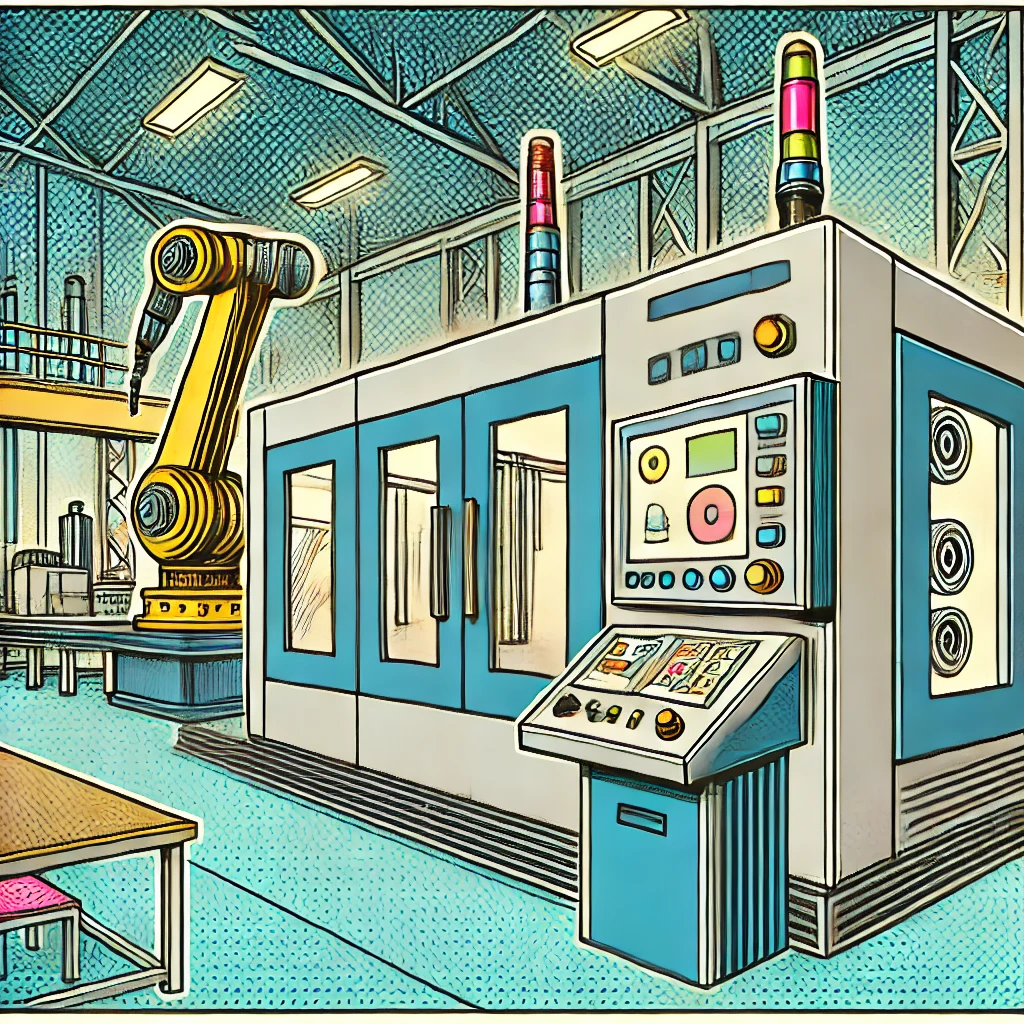Implementing technological changes and machine modernization is crucial for enhancing efficiency, safety, and compliance with current regulations. A key aspect to consider during machine modernization is compliance with the Machinery Directive 2006/42/EC and obtaining the CE mark. This article explains when machine modernization requires re-certification, the criteria for significant modernization, and how to conduct the re-certification process. Understanding these elements is vital for ensuring safety and legal compliance, which is important for both machine manufacturers and users.
Table of Contents
What is the CE Mark?
The CE mark is a declaration by the manufacturer that their product meets all relevant European Union requirements for health, safety, and environmental protection. It is mandatory for products covered by EU directives and allows for their free movement within the European market.
Importance of the CE Mark:
- User Safety: The CE mark guarantees that the product has undergone conformity assessment and is safe to use.
- Free Market: Products with the CE mark can be freely sold and used in all EU member states without additional testing or certification.
- Consumer Protection: It assures consumers that products meet European quality and safety standards.
Principles of CE Marking:
- Manufacturer or Authorized Representative: Only the manufacturer or their authorized representative can affix the CE mark to the product.
- Conformity Assessment: Before affixing the CE mark, the product must undergo conformity assessment procedures, which may include tests, inspections, and other forms of verification.
- Technical Documentation: The manufacturer must maintain complete technical documentation that confirms the product’s compliance with directive requirements.
Machinery Directive 2006/42/EC
The Machinery Directive 2006/42/EC sets out the minimum health and safety requirements that machines must meet when placed on the market or put into service in the EU.
Legal Foundations:
- Context and Purpose: The directive was introduced to harmonize machine safety regulations across EU member states, facilitating the free movement of machinery and ensuring a high level of health and safety protection.
- Scope: The directive covers all machines, except for certain categories such as machines specifically designed for nuclear or military purposes.
Scope of the Directive:
- Machines: Defined as an assembly of linked parts or components, at least one of which moves, and which are joined together for a specific application.
- Interchangeable Equipment: Devices mounted on a machine or tractor to change its function.
- Safety Components: Components that fulfill a safety function, are marketed independently, and whose failure endangers safety.
Machine Modernization

Machine modernization involves making changes aimed at improving its functionality, safety, or compliance with current standards. Modernization can include replacing components, adding new features, modifying existing systems, or adapting the machine for new applications.
Definition of Modernization:
- Technical Changes: Machine modernization may involve introducing new technologies, replacing old components with modern ones, improving energy efficiency, or adding new functions.
- Functional Changes: Modifications may involve changing the way the machine operates, adding new operational modes, or expanding its range of applications.
Examples of Modernization:
- Control System Replacement: Replacing an old control system with a modern, technologically advanced one, in line with the latest industrial automation standards.
- Adding Safety Guards: Introducing additional guards and protective barriers that reduce accident risks, in accordance with harmonized standards.
- Drive Modernization: Replacing old engines with modern, more efficient drive units, which can be part of the production automation process.
Significant vs. Non-Significant Machine Modernization
Significant modernization affects the fundamental safety aspects of the machine, requiring a reassessment of compliance with the Machinery Directive. Examples include changes in control systems, adding new safety functions, or structural modifications to the machine.
Machine modernization may require re-certification if the changes significantly impact safety and compliance with the Machinery Directive 2006/42/EC.
Assessment Criteria:
- Changes Affecting Safety: If machine modernization introduces changes that could affect the safety of machine use, it is considered significant.
- Examples: Adding new functions that may increase accident risks, replacing key components that directly impact safety, changes in machine structure.
Non-significant modernization involves cosmetic changes or minor improvements that do not affect compliance with safety requirements. Examples include changing the machine’s color, replacing worn parts with identical new ones, or minor modifications that enhance aesthetics.
| Criterion | Significant Modernization | Non-Significant Modernization |
|---|---|---|
| Definition | Changes affecting fundamental safety aspects | Minor improvements not affecting compliance with requirements |
| Examples | Changes in control systems, adding safety functions, structural modification | Changing color, replacing worn parts with identical new ones |
| Certification Requirements | Re-certification required | No re-certification needed |
| Risk Assessment | Detailed risk assessment required | No risk assessment required |
| Technical Documentation | Full technical documentation required | No need to update technical documentation |
CE Certification for Modernization
In some cases, it is possible to obtain the CE mark solely for the modernization of a machine. This applies when the modernization is independent of the original machine design but requires conformity assessment with current regulations.
When Required:
- Significant Changes: When machine modernization introduces significant changes in functionality or safety, re-certification is necessary.
- Independence of Modernization: If machine modernization is a standalone project that does not alter the machine’s basic assumptions but introduces new functions requiring conformity assessment.
Formal Steps:
- Conformity Assessment: Conduct a full conformity assessment with the Machinery Directive, including a review and update of technical documentation.
- Technical Documentation: Develop or update technical documentation covering all safety aspects of the machine.
- Declaration of Conformity: Prepare a new EU declaration of conformity confirming that the modernized machine meets all directive requirements.
- CE Marking: Affix the CE mark to the machine as required.
Impact of Modernization on CE Marking
Machine modernization may require new CE certification if the changes affect the machine’s compliance with the essential requirements of the Machinery Directive. A machine risk assessment should be conducted to identify potential hazards arising from modernization and take appropriate steps to ensure compliance with regulations.
Full Compliance with Directive Requirements
In cases where machine modernization requires full adaptation of the machine to current essential requirements of the Machinery Directive, it is necessary to conduct an analysis of safety functions according to the current legal status. This may involve recreating the full technical documentation of the manufacturer, including risk analysis, test reports, operating instructions, and compliance certificates.

When Required:
- Significant Safety Changes: When machine modernization introduces changes affecting the machine’s fundamental safety functions.
- Change in Machine Purpose: If machine modernization changes the machine’s purpose, it must be adapted to current directive requirements.
Safety Function Analysis:
- Hazard Identification: Conduct a detailed risk analysis to identify all potential hazards related to modernization.
- Machine Risk Assessment: Assess the risk associated with each identified hazard and take appropriate measures to minimize it.
Recreating Manufacturer Documentation:
- Technical Documentation: Prepare full technical documentation covering all aspects of the machine’s design, operation, and safety.
- Test Reports: Conduct tests and studies to confirm the machine’s compliance with directive requirements.
- Compliance Certificates: Obtain the necessary certificates confirming the machine’s compliance with legal requirements.
Re-Certification Procedure
The process of re-certifying a machine involves several formal steps:
- Conformity Assessment: Conduct a full conformity assessment with the Machinery Directive, including a review and update of technical documentation.
- Consultations with Experts: Collaborate with notified bodies and machine safety specialists to conduct the conformity assessment.
- Risk Analysis: Detailed risk analysis related to the changes introduced.
- Technical Documentation: Develop or update technical documentation covering all safety aspects of the machine.
- Operating Instructions: Update user manuals to reflect the changes made.
- Diagrams and Plans: Supplement documentation with new diagrams, technical plans, and descriptions of safety functions.
- Declaration of Conformity: Prepare a new EU declaration of conformity confirming that the modernized machine meets all directive requirements.
- Signing the Declaration: The declaration must be signed by the manufacturer’s authorized representative.
- Attachments to the Declaration: Include necessary documents confirming the tests and assessments conducted.
- CE Marking: Affix the CE mark to the machine as required.
- Visible and Durable Marking: The CE mark must be placed in a visible and durable location on the machine.
- Other Markings: Avoid placing other markings that could mislead about the meaning of the CE mark.
Machine Modernization: Practical Tips
During machine modernization and the re-certification process, it is important to avoid common mistakes such as inaccurate risk assessment, lack of complete technical documentation, or incorrect placement of the CE mark.
Common Mistakes and How to Avoid Them:
- Inaccurate Risk Assessment: Conduct a detailed risk analysis to identify all potential hazards.
- Lack of Complete Technical Documentation: Maintain up-to-date and complete technical documentation covering all aspects of the machine.
- Incorrect Placement of the CE Mark: Ensure the CE mark is placed in a visible and durable location on the machine.
Machine modernization and the associated re-certification are crucial for ensuring safety and compliance with regulations. Adhering to the Machinery Directive and thoroughly conducting the conformity assessment process helps avoid legal and technical issues and ensures the safe use of machines. For manufacturers and users, understanding and implementing these principles is not only a legal requirement but also a responsible approach to safety and quality.
FAQ: Machine Modernization and CE Marking
Machine modernization involves making changes aimed at improving functionality, safety, or compliance with current standards.
No, only significant machine modernization, which affects safety and compliance with the Machinery Directive 2006/42/EC, requires re-certification of the CE mark.
Examples include changes in control systems, adding new safety functions, or structural modifications to the machine.
Machine risk assessment is the process of identifying and analyzing potential hazards associated with machine use and taking measures to minimize them.
Full technical documentation is required during re-certification of the CE mark after modernization to confirm compliance with current requirements.
Yes, in some cases it is possible to obtain the CE mark solely for machine modernization, if the changes are independent of the original machine design.
The procedure includes conformity assessment, updating technical documentation, preparing a declaration of conformity, and affixing the CE mark to the machine.
Significant modernization affects the fundamental safety aspects of the machine, while non-significant modernization involves minor improvements that do not affect compliance with safety requirements.
The most common mistakes include inaccurate risk assessment, lack of complete technical documentation, and incorrect placement of the CE mark.
Compliance with the Machinery Directive ensures that the machine is safe to use and meets European standards, protecting users and enabling legal trade of the machine in the EU market.
